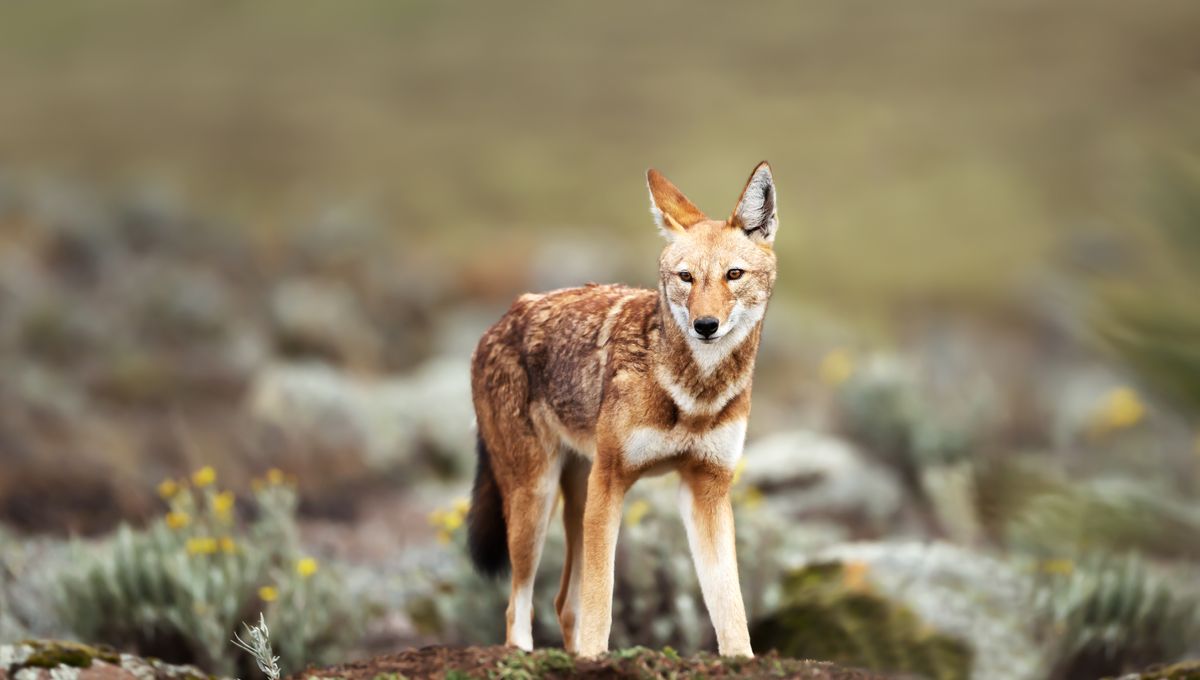
Africa is home to a rich array of carnivorous animals, from ferocious felids like lions and cheetahs to smaller creatures like foxes and mongoose. However, many such predators are also some of the continent’s most endangered – perhaps none more so than the highland-dwelling Ethiopian wolf (Canis simensis).
An ancient African species…
You’d be forgiven for thinking an Ethiopian wolf was a fox from a distance – like their fellow canids, they have reddish fur with some white patches. They are definitely wolves, however, though slenderer and more long-legged than the gray wolves many of us are familiar with.
Social animals in all areas but hunting, packs of wild Ethiopian wolves are found in only six populations throughout Ethiopia, where they are endemic and restricted to alpine regions over 3,000 meters (9,843 feet) above sea level. That’s thought to be largely down to their diet, which consists of giant mole rats.
One of the most iconic African species, fossil records have led recent research to estimate that the Ethiopian wolf first appeared on the continent at least 1.6 to 1.4 million years ago. In that time, the species had likely previously encountered serious challenges to its survival during periods of climate change – but it persisted.
…that’s now under threat
Now, the Ethiopian wolf is at risk again. It’s classed as an endangered species on the IUCN Red List, with recent monitoring data estimating that just 454 adult wolves in 99 packs remain across an area of 2,700 square kilometers (1,042 square miles), and the population is still declining.
Unlike historical periods of decline, however, the threats this time around are thought to have a lot more to do with human activity – primarily, our domestication of dogs and the resulting spread of disease.
“The most immediate threat is posed by viral diseases transmitted by domestic dogs, with large packs and the social nature of wolves increasing the risk of epizootics resulting in large demographic fluctuations,” write the authors of the 2024 study describing the latest Ethiopian wolf monitoring data.
“In the Bale Mountains, the largest population, outbreaks of rabies and canine distemper virus (CDV) have reduced local populations by up to 75 percent and their recovery has been delayed when disease extirpated whole breeding units or packs.”
There are other human-related threats too. The wolves’ natural habitat in the Ethiopian highlands has made an attractive target for agricultural expansion; according to the Ethiopian Wolf Conservation Programme (EWCP), 60 percent of the land suitable for the wolves has already been converted for use in agriculture.
In these circumstances, the future of the Ethiopian wolf is “conservation dependent”, the study authors write. To ensure their survival will require “better habitat protection, active management of disease, fostering of coexistence, and eventually, conservation translocations to manage several small, isolated populations as a metapopulation.”
Source Link: Africa’s Most Endangered Carnivore Has Been Around For Over 1 Million Years